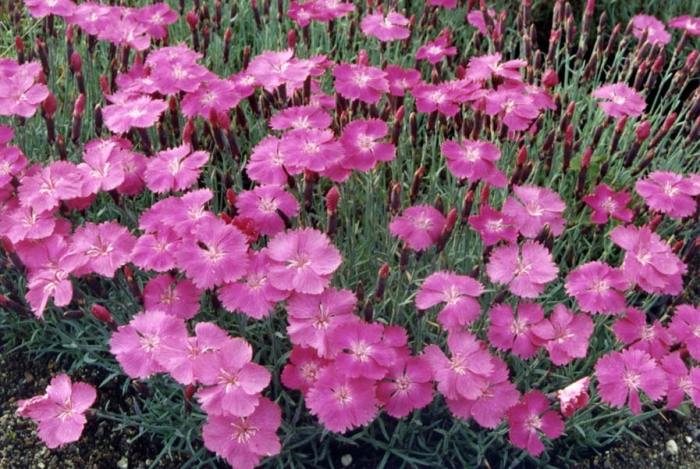Cheddar Pink
(Dianthus gratianopolitanus)
Cheddar Pink (Dianthus gratianopolitanus)
/
/

Ghislain118 (AD) http://www.fleurs-des-montagnes.net
CC BY-SA 3.0










































Estimated Native Range
Summary
This plant is valued for its drought tolerance, long blooming period, and ease of maintenance. It thrives in full sun and requires well-drained soil, preferably alkaline to neutral in pH. Overwatering or poor drainage can lead to crown rot, and it does not tolerate wet winter soil conditions. Cheddar pink is often used in rock gardens, as edging, or in alpine troughs. It is also suitable for xeriscaping due to its low water requirements. While generally disease-resistant, it can be susceptible to rust and should be monitored for signs of infection.CC BY-SA 4.0
Plant Description
- Plant Type: Herb
- Height: 0.8-1 feet
- Width: 1.5-2 feet
- Growth Rate: Moderate
- Flower Color: Pink
- Flowering Season: Spring, Summer
- Leaf Retention: Evergreen
Growth Requirements
- Sun: Full Sun
- Water: Medium
- Drainage: Slow, Medium, Fast
Common Uses
Bank Stabilization, Bee Garden, Bird Garden, Border Plant, Butterfly Garden, Deer Resistant, Drought Tolerant, Fire Resistant, Fragrant, Groundcover, Hummingbird Garden, Low Maintenance, Potted Plant, Rabbit Resistant, Rock Garden, Salt Tolerant, Showy Flowers, Street Planting
Natural Habitat
Rocky and grassy slopes of mountains in central and southern Europe
Other Names
Common Names: Clove Pink, Pfingst-Nelke, Oeillet Bleuâtre, Oeillet De La Pentecôte, Oeillet Bleu, Oeillet De Grenoble, Bergnejlika
Scientific Names: , Dianthus gratianopolitanus, Dianthus caesius, Dianthus moravicus, Dianthus pulchellus, Dianthus suavis, Dianthus flaccidus, Dianthus gratianopolitanus var. montanus, Dianthus caesius f. pulchellus, Dianthus caesius var. flaccidus
GBIF Accepted Name: Dianthus gratianopolitanus Vill.